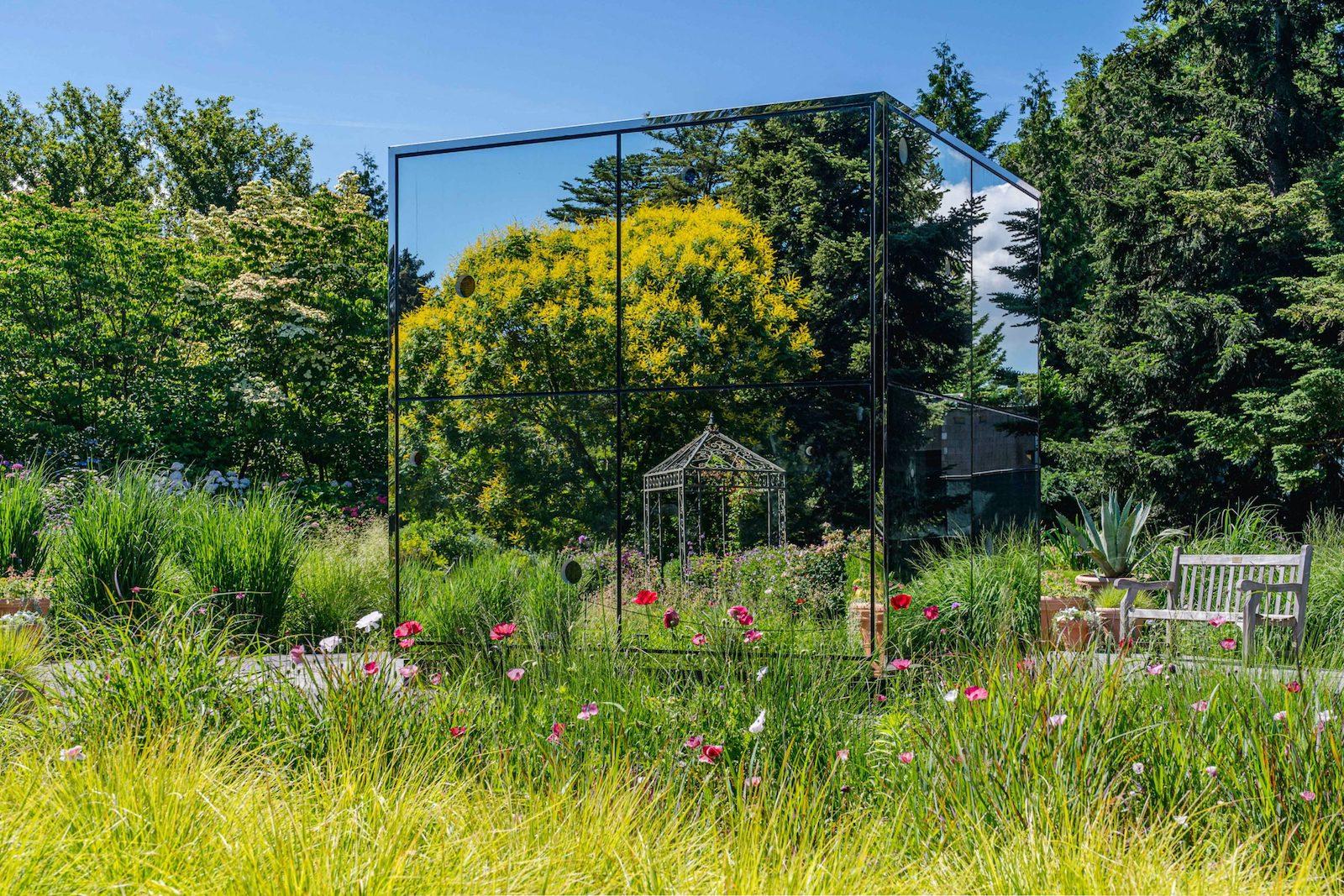Over the past few decades, Kusama’s star has become brighter and brighter—to the point where securing tickets to one of her New York exhibitions is a challenge. The Japanese artist, writer, and designer, who currently resides in Tokyo, is avant-garde, multifaceted, and infinitely creative. Identifying as an outsider, Kusama has refused to align herself with Minimalism, Surrealism, or any movement that might tempt an eager viewer. What she has emphasized is her relationship to the universe and how art has provided a respite from her mental illness. “In my decades of work, I have always thought of humankind’s love and world peace,” she said in a 2014 interview with Sleek magazine. “I fight pain, anxiety, and fear every day, and the only method I have found that relieves my illness is to keep creating art.”

Kusama in Flower Obsession.
When Yayoi Kusama established herself in New York City in 1958, the first thing she did was visit the Empire State Building. She climbed the landmark, looked out at the astonishing city, and, as she recalled in an earlier interview republished with Artspace, “aspired to grab everything that went on in the city and become a star. ” It is appropriate, then, that one of the opening works in KUSAMA: Cosmic Nature at the New York Botanical Garden (April 10–October 31, 2021) is a star-like creature, wavering above a reflecting pool. Perched above the placid, mirror-like surface, without touching the water, it feels anxious, but welcoming.
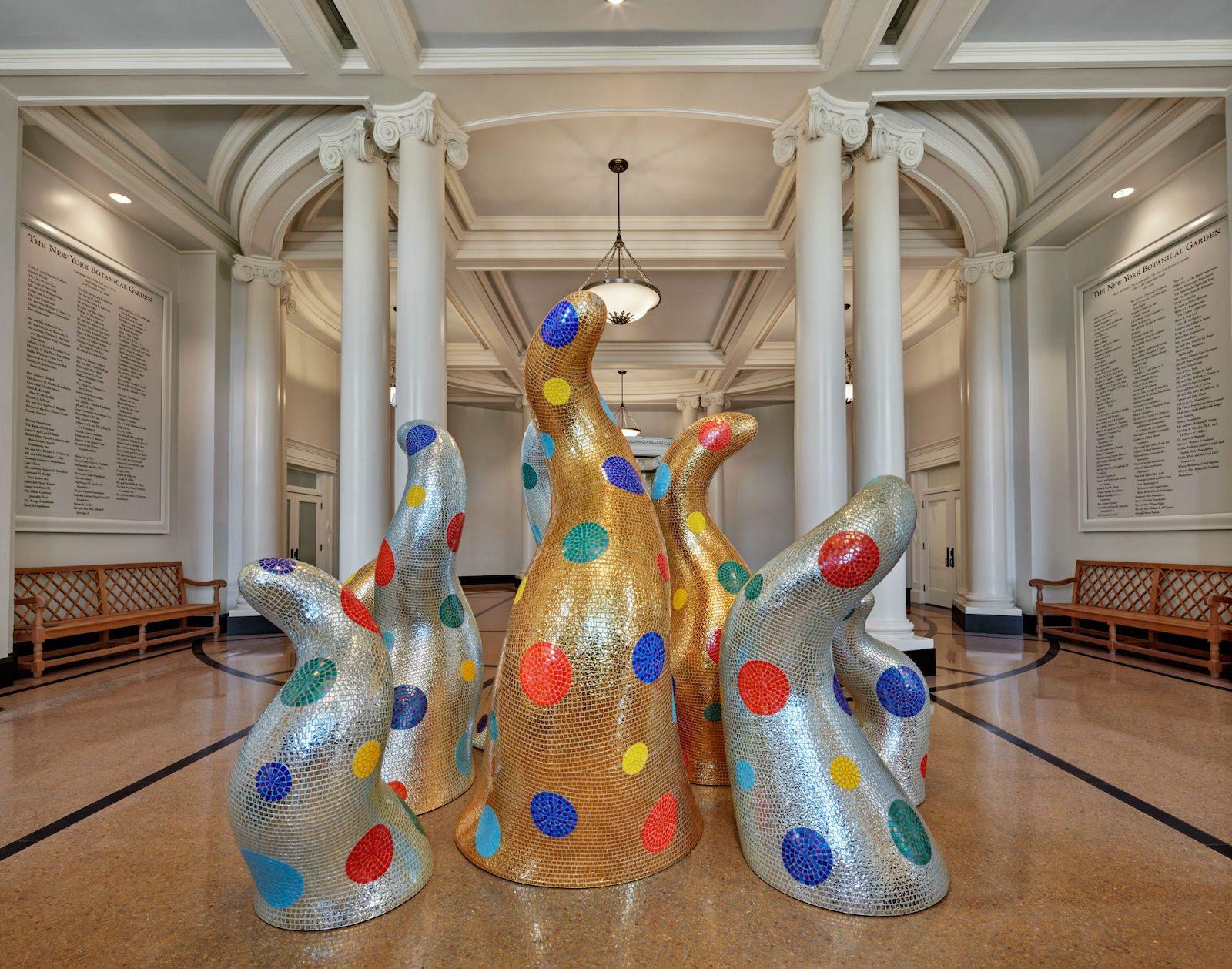
Life, 2015. The New York Botanical Garden, 2021. Fiberglass-reinforced plastic, tiles, and resin.
KUSAMA: Cosmic Nature focuses on the artist’s lifelong interest in nature and the cosmos, which sometimes serves as a stand-in for exploring the relationship between the world and ourselves. Across the 250-acre landscape of the Botanical Garden, guest curator Mika Yoshitake, Ph.D., placed the artist’s famous, proliferating forms amongst their natural counterparts, complementing Kusama’s clear aesthetic language with the opportunity to observe organic movement and growth.
Many of the works in the exhibition seem to simultaneously radiate optimism and obliteration. The aforementioned star-like creature is called I Want to Fly to the Universe, and it is a chaotic, many-tentacled sculpture, polka-dotted and slightly primordial. Particularly as the reflection tremors in the pool below, it is difficult to know precisely what you’re looking at or even how it makes you feel.
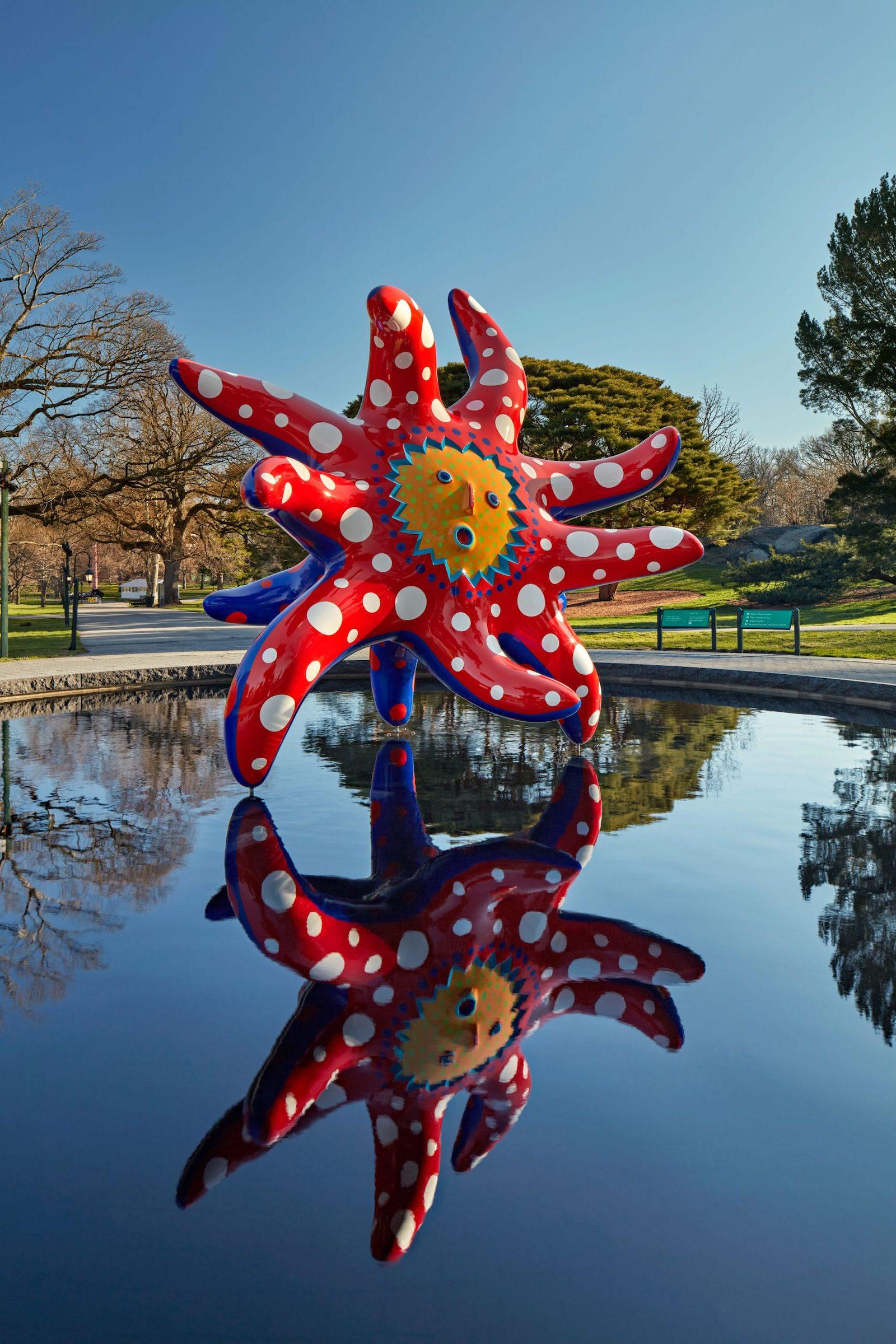
I Want to Fly to the Universe, 2020. The New York Botanical Garden, 2021. Urethane paint on aluminum.
The exhibition continues, sprawling out across the large campus and indoor galleries. Tulip-shaped sculptures leap out from very real water lilies; you trawl through a floral-themed obliteration room, looking for the perfect spot for your sticker. In Pumpkins Screaming About Love Beyond Infinity, mottled pumpkins light up in an infinite procession that grows and grows until it is extinguished.
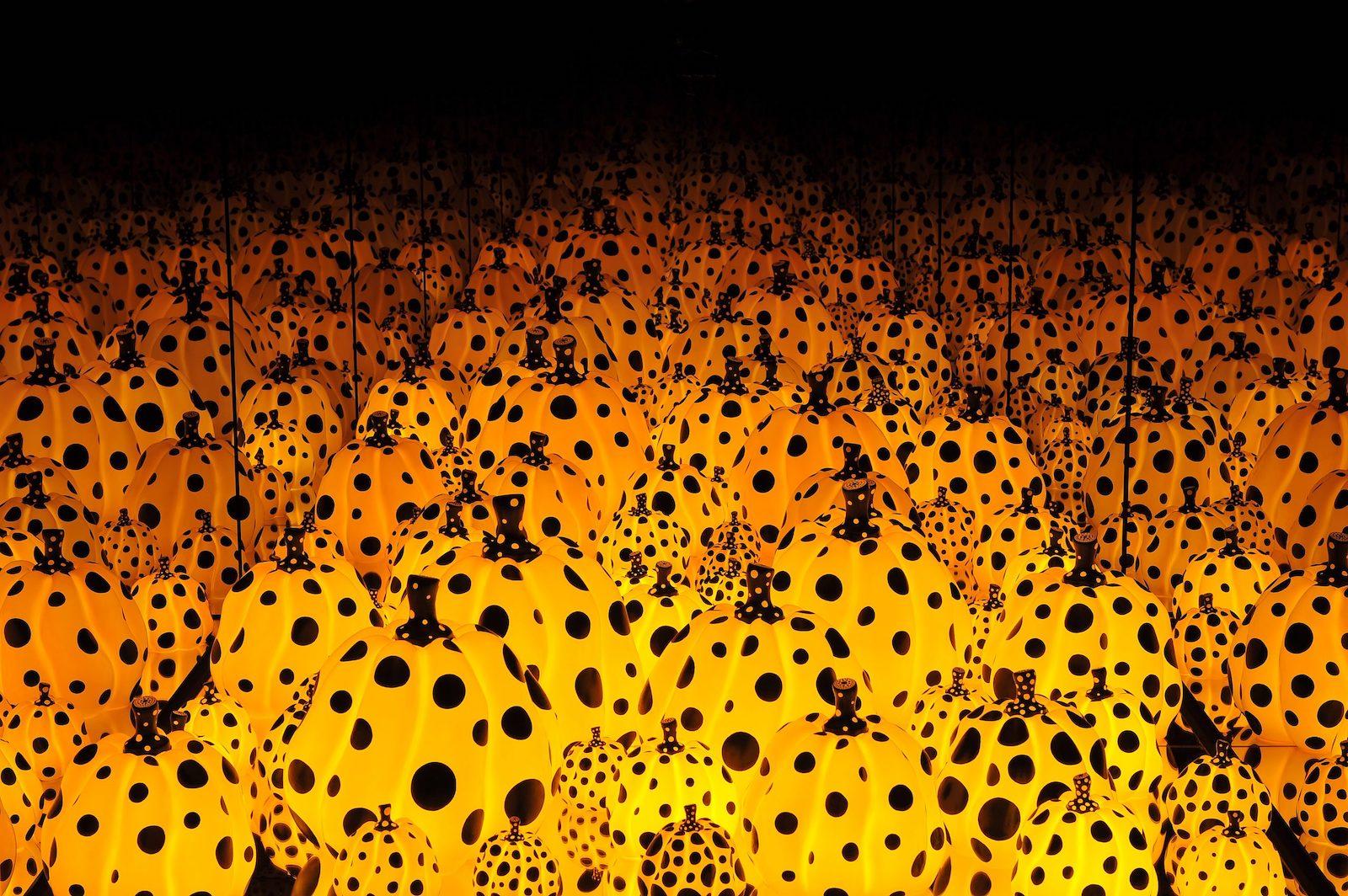
Pumpkins Screaming About Love Beyond Infinity, 2017. The New York Botanical Garden, 2021. Mirrors, acrylic, glass, LEDs, and wood panels.
But not to be missed among the more blockbuster elements are the presentations of her earlier works, like Walking Piece. Kusama finished the slideshow in 1966, just after the passage of the 1965 Hart-Celler Act, which abolished the immigration cap on Asia, Latin America, and Africa. Photographed by Eikoh Hosoe, the performance piece shows Kusama walking through industrial, commercial New York, while dressed in a pink, floral kimono. Her traditional Japanese garments stress her outsider status, exploring alienation and exoticization in the city in which she had hoped to become a star.
KUSAMA: Cosmic Nature thus offers insight into not only the celestial and the terrestrial, but also the power of Kusama’s career and her relationship to New York. As Kusama explained in her 2017 interview with Artspace, when she travels here, “It is as if another person surfaces, to complement my personality. If New York is the front side, Japan is the back.”
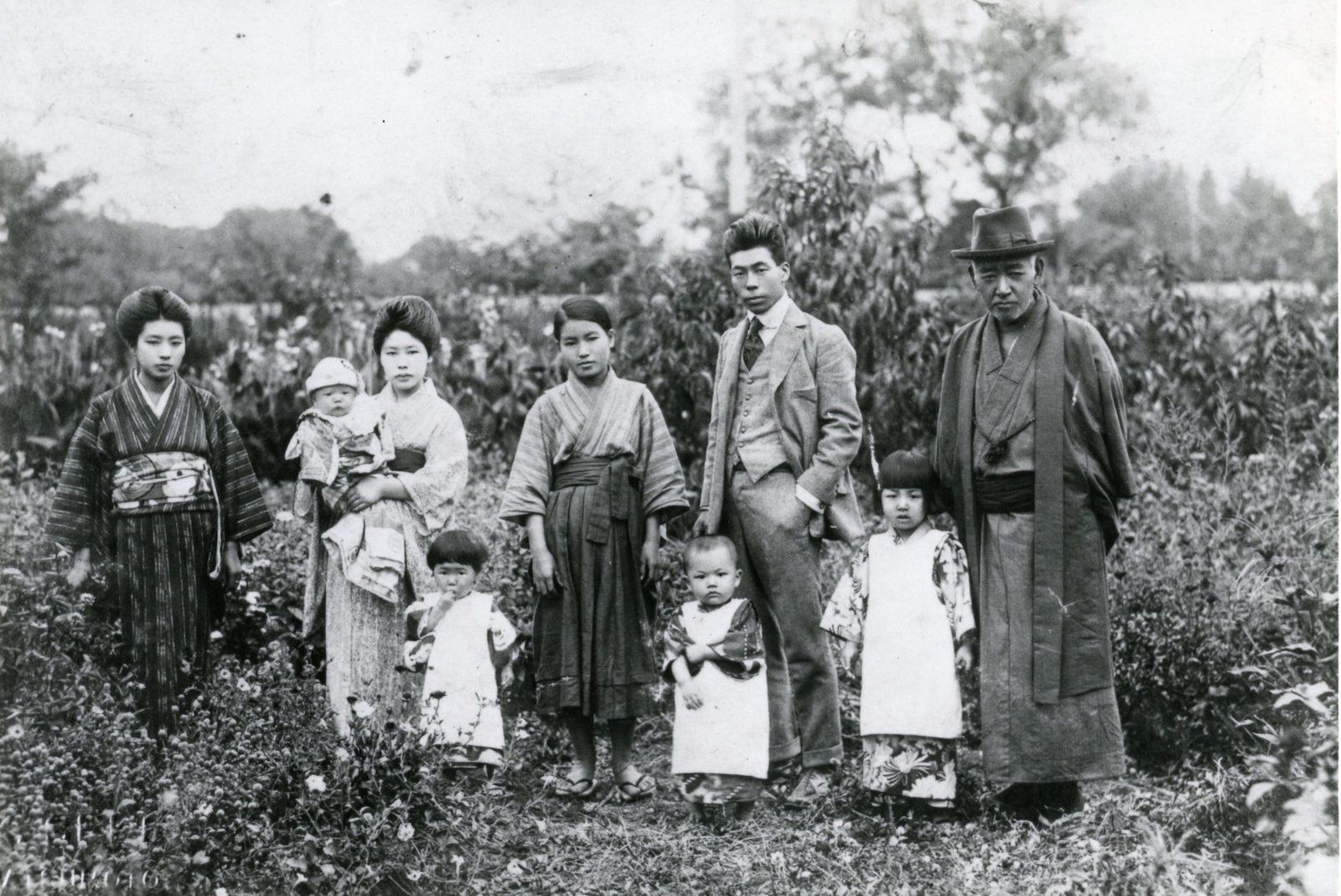
The Kusama Family, ca. 1929.





